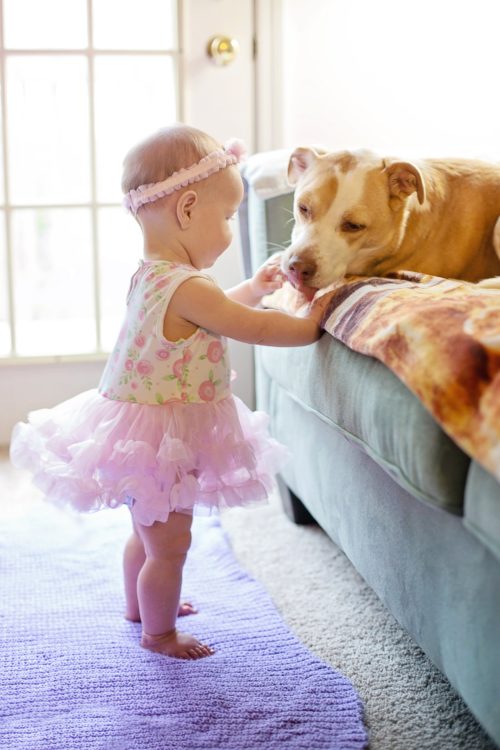It goes without saying that humans love having pets.
With an estimated 86.4 million cats and 78.2 million dogs in households across the United States, and 9.8 million cats and 6.7 million dogs owned in the United Kingdom, it’s safe to say animals play an important role in the lives of many. The way we respect animals shapes the way we treat not only ourselves but others.
It’s not uncommon for young children to pull a cat’s tail or tug at a dog’s fur out of mischief but it’s up to us, as adults, to teach our kids to respect animals. Animals have feelings and deserve respect, because they make us better people. So how can you teach your children to respect animals?

1. Set A Good Example
Children are like sponges – they absorb everything they see and hear around them. They’re influenced by everything, even things you think they’re not paying attention to. Setting a good example is extremely important. If you respect animals, they’ll respect animals. Not shouting ‘stupid cat’ at the stray that runs in front of your car could make a huge difference in how your child grows up treating other felines. It is as simple as that.
2. Get A Pet
Whether it be a goldfish or a dog, children are forced to learn how to look after themselves and others quicker if they have a pet. Having to feed, clean and run around after their pets teaches them responsibility. It means that they grow up to become more considerate to others, self-sufficient and they are more likely to become law-abiding and valued citizens. Pets are also great companions so your child will become more sociable too.
3. Be Merciful
If you have a mouse in the house, don’t use inhumane traps such as glue traps. The glue is extremely painful for the mouse stuck on it and the trap itself doesn’t kill the mouse which means it can be alive for days, suffering. Try getting something like a Trip-Trap Mouse Trap which has enough ventilation for the mouse to survive until you realize it’s in there and can let it out in a field.
4. Observe Animals in Their Natural Habitat
Immerse yourself in the great outdoors by visiting parks, hiking and spending time in nature which can make a big difference. It helps your child develop a connection with the natural world and seeing animals that aren’t in captivity helps them to understand their place in the circle of life. Even watching ants go about their business in the back garden will help your child learn how to respect other living things.

5. Visit Farms, Zoos, and Shelters
More and more often, farms, zoos and animal shelters are letting in children so they can learn more about all kinds of animals, from dogs to horses to penguins. In fact, some zoos have created week-long courses that give applicants the chance to gain practical experience in zoology and animal handling. But if you can’t do any of that, then listening to the talks and watching the animals as they go about their lives can have a huge impact on the way children see and react towards animals. Shelters often have information about where each of their animals came from before they were brought into the shelter, so children can also see the repercussions of negative actions towards animals.
In her research on the link between animal cruelty and children, Gail F. Melson, a professor of child development and family studies at Purdue University, found that 70% of violent prisoners (she lists Jeffrey Dahmer, the Boston strangler Alberto DeSalvo and the Son of Sam David Berkowitz as examples) had histories of serious and repeated animal abuse in their childhood. Even Professor Frank Ascione at the University of Denver, who assessed 1,433 children between the ages of 6 and 12, discovered that the 60% who had been exposed to violence abused animals. Perhaps teaching children from an early age that animals deserve the same amount of kindness we wish ourselves to be treated with will give them more respect for human life too.
Be sure to leave a comment below!
Guest post courtesy of Jenny Holt. of The views and opinions expressed in this article are those of the guest author and do not necessarily represent the views of Val Heart & Heart Communication Enterprises Inc. This article was previously published February 13, 2017, and was updated June 17, 2022.
Did you enjoy this article? Pet lovers might find these interesting, as well:
Adopting Your First Shelter Dog: 4 Tips for a Smooth Homecoming






Leave a Reply